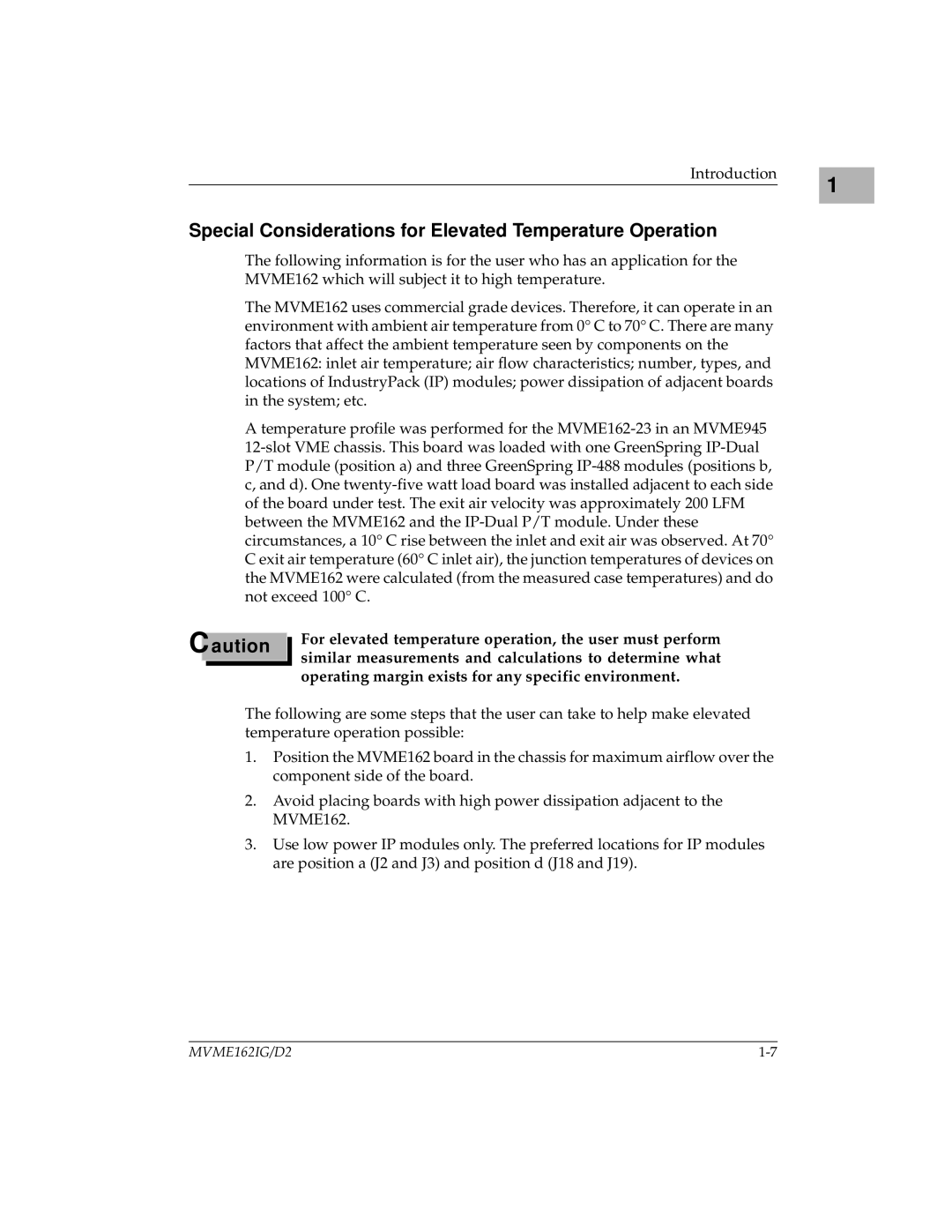
Introduction | 1 |
|
Special Considerations for Elevated Temperature Operation
The following information is for the user who has an application for the
MVME162 which will subject it to high temperature.
The MVME162 uses commercial grade devices. Therefore, it can operate in an environment with ambient air temperature from 0° C to 70° C. There are many factors that affect the ambient temperature seen by components on the MVME162: inlet air temperature; air flow characteristics; number, types, and locations of IndustryPack (IP) modules; power dissipation of adjacent boards in the system; etc.
A temperature profile was performed for the
Caution
For elevated temperature operation, the user must perform similar measurements and calculations to determine what operating margin exists for any specific environment.
The following are some steps that the user can take to help make elevated temperature operation possible:
1.Position the MVME162 board in the chassis for maximum airflow over the component side of the board.
2.Avoid placing boards with high power dissipation adjacent to the MVME162.
3.Use low power IP modules only. The preferred locations for IP modules are position a (J2 and J3) and position d (J18 and J19).
MVME162IG/D2 |
